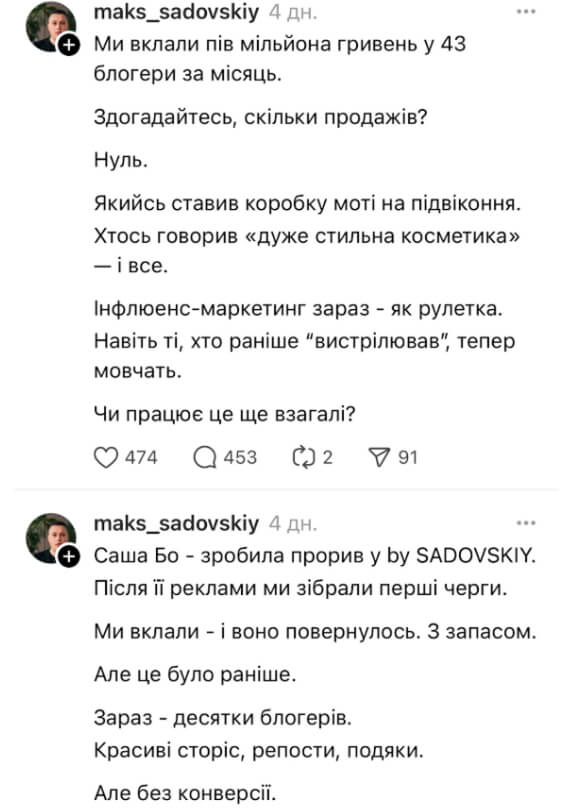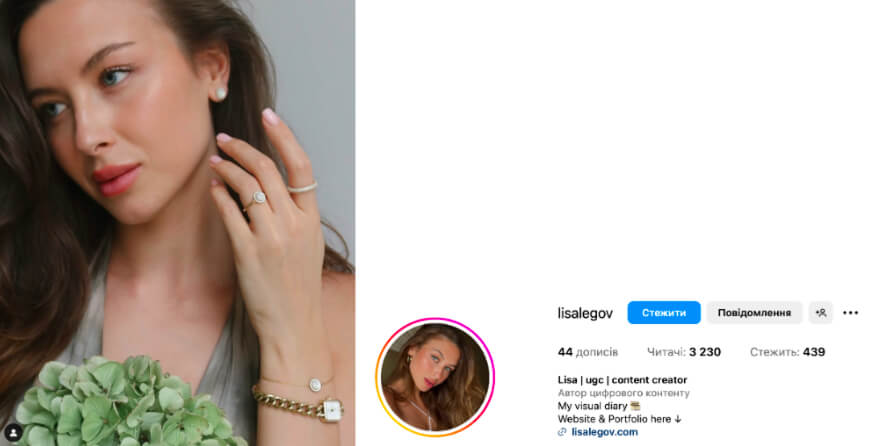Don't miss interesting news

Imagine this: a company pours $5,000 into advertising through top bloggers with a million followers. And what? Ten clicks. Maybe zero sales. The emotional scale is somewhere between “cry” and “burn.”
Now imagine that they would have thrown the same money at 10 micro-influencers… and would have closed the plan.
That’s it. The classic era of the “race to the bottom” is officially dead. Now it’s “who really influences” that rules, not “who has the most pomp”. Ukrainian businessmen are talking about this as well.

| Type | Audience |
| Nano-blogger | 1,000-10,000k followers |
| Micro-blogger | 10,000-50,000k followers |
That is, these are not distant superstars, but normal “people of your own” whom the audience really listens to and trusts. A minimum of unnecessary pretentiousness and a maximum of life in their content and broadcasting of life.
| Myth | Reality |
| More subscribers = more sales | No, the big bloggers have an ER of 0.5% or less, so engagement doesn’t correlate with that “wow” number. |
| Bigger accounts = more trust | Everyone knows there’s stupid advertising out there for the sake of earning a price list, not everyone advertises what they use honestly in life. |
| Bigger accounts = cooler communication | Unfortunately, that’s not necessarily the case. While many of the big bloggers have their own direct advertising managers too, sometimes it’s just boilerplate. |
Large accounts = more trustEveryone knows that there is stupid advertising for the sake of earning money on the price list, not everyone advertises what they use honestly in life.Larger accounts = better communicationUnfortunately, this is not necessarily true. Although many big bloggers have their own direct advertising managers, sometimes it’s just templates.
In short: brands are already starting to realize that real influence is not about numbers. It’s about interaction and loyalty to an individual influencer. Even if he has 9k subscribers, but all of them are organic, it’s okay.
When a person sees a post from a micro-blogger, there is a greater chance that they will think it is a worthy recommendation, not just anything.
People really like, comment, ask questions, and share. These are not bots, not sleeping accounts, but real people who are interested in the topic of the blog or the charisma of the nano-blogger. Live people = live sales.
Instead of buying one millionaire for all the money in the world (or actually for 40,000+ UAH), you can run ads on several microbloggers at once and test different approaches.
Young bloggers rarely “shove” ads in your face. They are able to organically weave the product into their style and it does not cause a facepalm among subscribers. For example, there are bloggers with content that you recognize out of a thousand thanks to their cowardice, and even though they have 17k subscribers, they are real and trustworthy:

Another example of an organic blogger is inspiring in that the influencer gained 50k subscribers from almost 0 thanks to an interesting broadcast of life in an ordinary village and a combination of creative work and “imperfection” of living there:

Glossier is a cosmetics brand that has become a cult brand thanks to micro-influencers. From the very beginning, they relied not on mega-stars, but on ordinary girls on Instagram with 5-30 thousand followers. They simply sent them products without pretense, asked them to share their honest opinions, and thus built up a loyal fan base.

Gymshark is a British sportswear brand that once shot to fame by collaborating with fitness bloggers on YouTube and Instagram. No star contracts. Instead, real athletes who actually wore their uniforms during training. Now, of course, he continues, but he has collaborations with different levels of bloggers.
Mejuri is a Canadian jewelry brand that chose TikTok and Instagram micro-influencers instead of top models. The content looked like personal recommendations rather than advertising, and it brought them a threefold growth in two years. Although initially Mejuri relied on Instagram lifestyle bloggers (there were also medium-sized accounts up to 100k).
After 2020, Mejuri very confidently entered TikTok through nano- and micro-influencers.

Daniel Wellington is the case where success was built almost exclusively on sending watches to small bloggers without direct payments. Thousands of organic posts have made this company recognizable around the world. And here’s an example: the brand collaborated with a creator with 3k subscribers.

The affiliate and CPA niches are even more interesting: small tweeters and local instagrammers have been actively used for a long time to promote gambling, debit card, gutra, and mobile applications. Another reason for this is that large accounts filter betting or debit card topics more. In general, micro-influencers often give better ROI than “promoted” accounts with hundreds of thousands of subscribers.
Because there is no perfect world of collaboration. When you work with micro-influencers, there are also mistakes:
But if you are not lazy to manage, the profit will definitely be greater.
There is no magic here, but you need to be careful and balanced:
👉 Also, ask directly how many conversions/saves the previous promo post gave. Those who are committed to results and confident in their service will be happy to show you the numbers.
Never rely on “we’ll agree and understand each other anyway,” even if it’s a microblogger. Speak clearly:
To avoid “oops, forgot/missed this point”:
Does this sound like basic stuff? They are. But they save you nerves and money.
Micro and nano bloggers are making the weather in marketing right now. If you want not a “tick in the plan”, but real leads and sales – cooperate with them.
Because it is important not to stupidly “pour money into the coverage”, but to really convert an active audience. In 2025, it is not the quantity but the quality of communication from the audience that rules, it is a fact.
Now is the right time to get into this trend, while many competitors are still stuck on “star faces” because they have a “cooler” image.